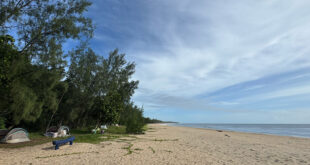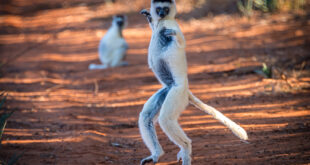One of Madagascar’s most interesting birds from an ornithological point of view is also one of the smallest feathered creatures on the island: the Schlegel’s Asity (Philepitta schlegeli). These birds grow to just 12 to 14 cm in size, smaller than an average pepper. The Madagascan name for these small birds is Asity, too – sounds English? That’s no coincidence! In fact, the English name Schlegel’s Asity is borrowed from Malagasy and simply linked to the name of the ornithologist Hermann Schlegel, who first described it in the 19th century.
Schlegel’s Asities love sweets
Schlegel’s Asities live in western and northwestern Madagascar. They particularly like karst rock formations such as the Tsingy de Bemaraha or the Tsingy of Ankarana, with small dry forests between the needle-sharp limestone rocks, but also extensive dry forests such as those in Ankarafantsika. Their northernmost range is near Andrafiamena-Andavakoera; the southernmost range is in Kirindy Reserve in western Madagascar. Schlegel’s Asities occur at altitudes from sea level to a maximum of 800 metres above sea level.
Schlegel’s Asities love fruit juice and the sweet nectar hidden in flowers. Almost the entire diet of the Schlegel’s Asity consists of small fruits and nectar. However, western Madagascar is bone dry for many months of the year. And at the end of the dry season, even the last and most durable fruits have dried up or long since fallen from the trees. During these periods, Schlegel’s Asities also feed on insects.
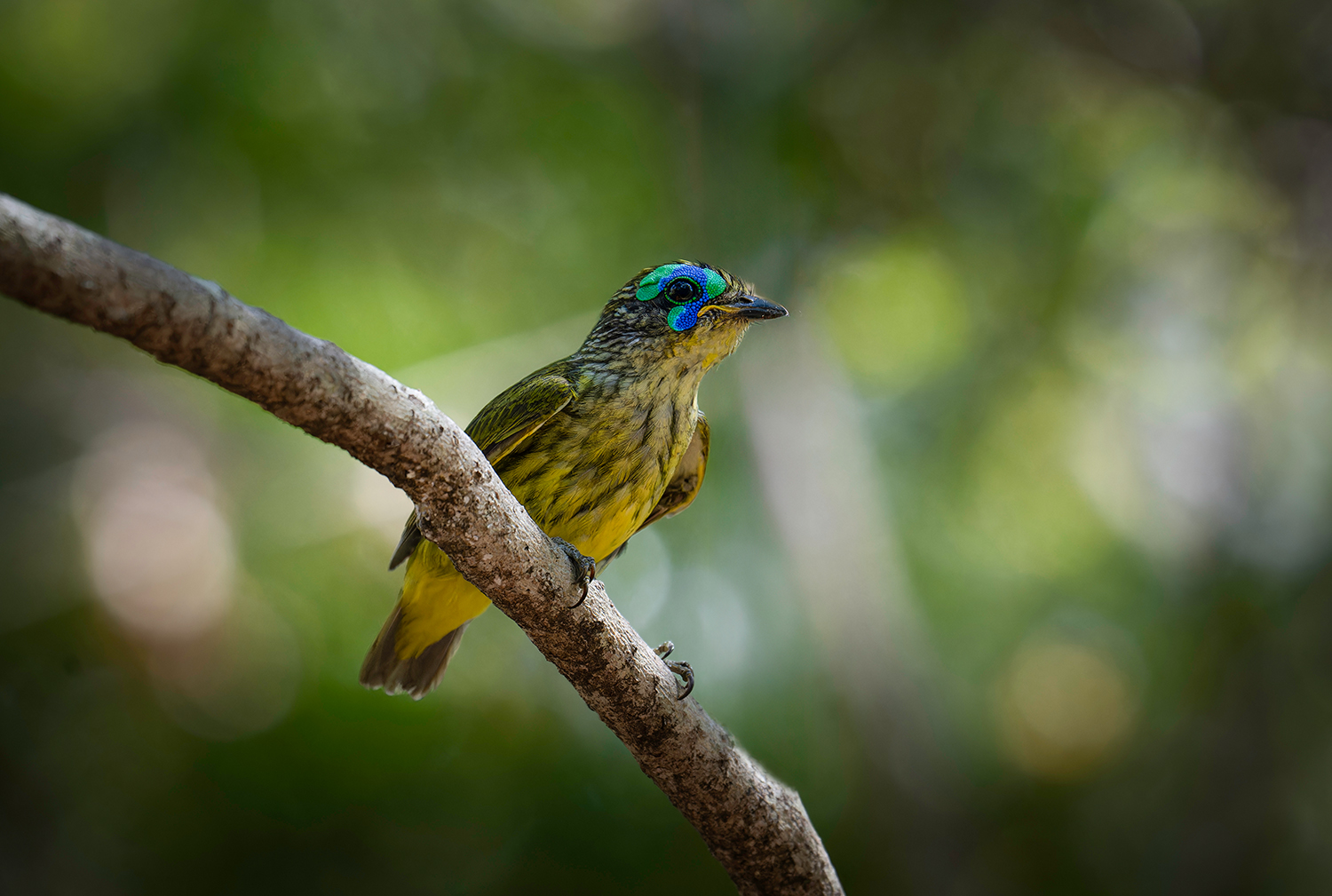
The magnificent plumage of the males impresses both humans and animals
With the onset of the rainy season in November, the otherwise quiet life of the Schlegel’s Asity becomes turbulent. During courtship, the males don their finery: their heads turn jet black with four turquoise spots and a ring of the same colour around the eye. Their breasts and bellies turn bright yellow during this time, while the rest of their plumage remains olive green. If a female is impressed enough, she will pair up with the male.
Each pair spends days building a finely woven nest. They laboriously gather blade after blade of grass. They use it to create a spindle hanging from a branch, with the entrance in the middle. Individual leaves are lovingly woven together with the blades of grass. A piece of bark here and a little moss there are added to the nest until it is perfect. Schlegel’s Asities use a very special material to hold the nest together and give it its characteristic spindle shape: spider silk!
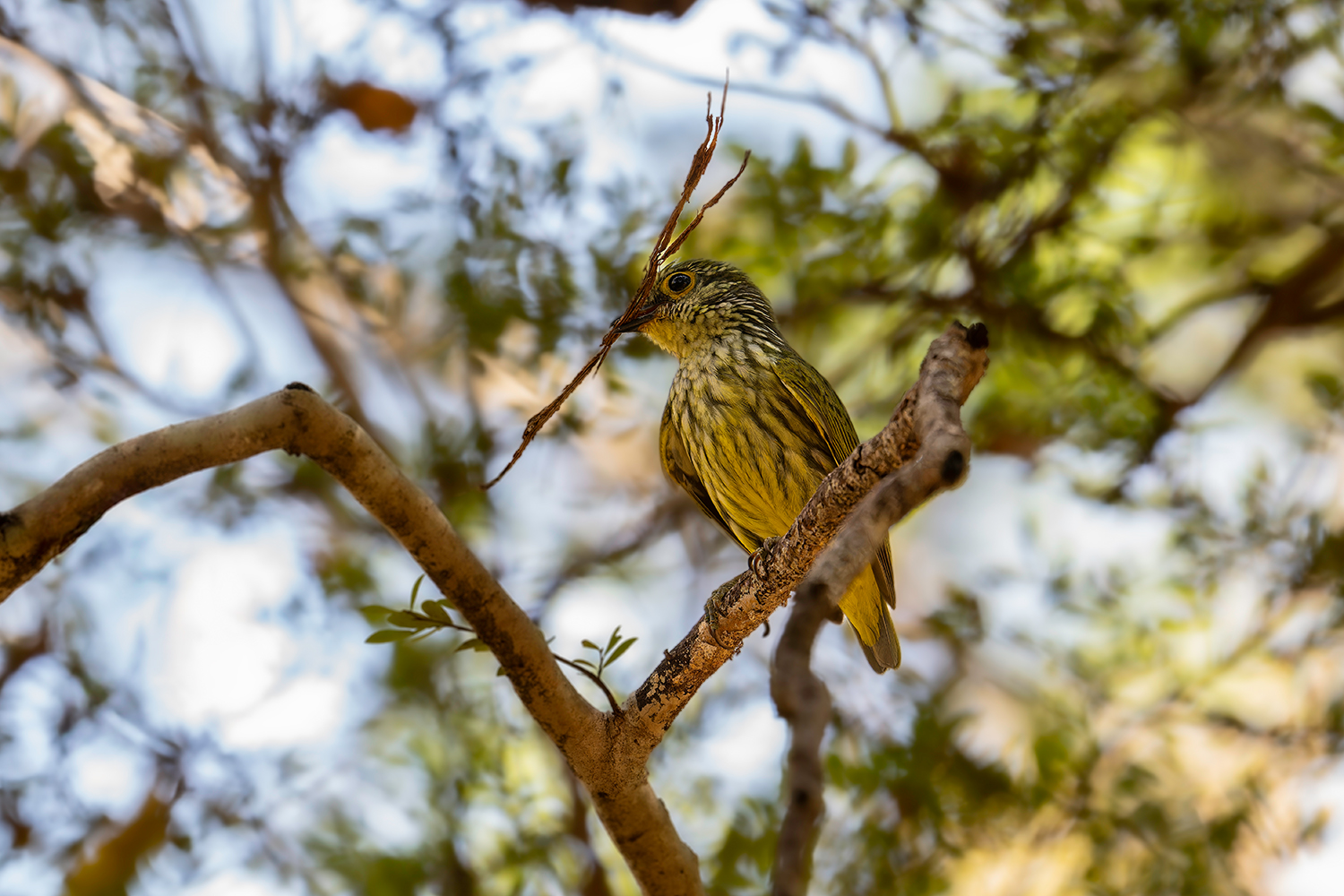
Monogamous or not?
For many years, it was believed that a male Schlegel’s Asities would mate with several females. However, recent observations in many parts of Madagascar indicate monogamous behaviour, i.e. only one female and one male together. Very little is known about the reproduction of Schlegel’s Asity. How many young there are per nest, whether they are cared for equally by both parents and when the young fledge – all this is still completely unknown.
By the new year at the latest, even the last pairs will have finished breeding. Soon the males will lose their breeding plumage and look like the females again. Only a few brown speckles on the head will adorn the olive-green plumage, indicating that it is a male Schlegel’s Asity.
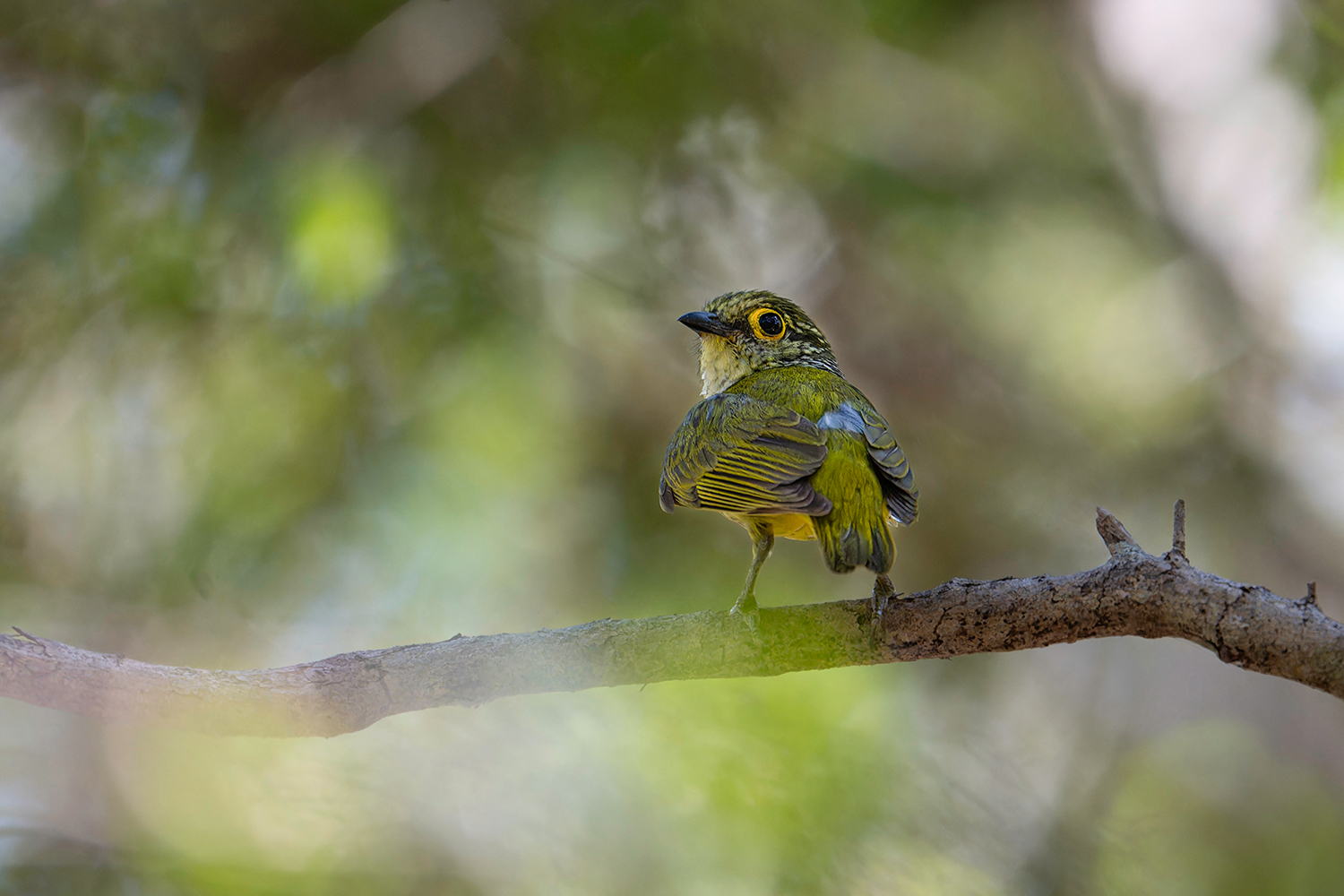
The future of Schlegel’s Asity is threatened
Schlegel’s Asity is listed as potentially endangered on the Red List of Threatened Species. This is mainly because the remaining populations are located far apart from each other. Schlegel’s Asities do not usually fly far enough to bridge the areas in between, which are characterised by secondary vegetation. This means that genetic exchange between the small populations is no longer possible. In addition, the remaining habitat continues to disappear every year due to slash-and-burn practices. It is not only birds and other animals that find it difficult to survive in the hot, dry west – the people here are often extremely poor and seek firewood, coal, farmland and water in the last remaining forest fragments.
If you want to observe or even photograph Schlegel’s Asity, you need a bit of luck. It’s not that easy to spot these little birds. The dry forests in the Tsingy de Bemaraha and Ankarafantsika National Park offer good opportunities for observation. Both are not that easy to reach, but they are still an experience even in the dry season – especially if you actually spot a Schlegel’s Asity!
-
- Photographic evidence of bi-parental nest-building by Schlegel’s Asity Philepitta schlegeli (Philepittidae)
Bulletin of the British Ornithologists’ Club, 145(1):91-94 | 2025 | Autoren: Clifford B. Frith & Dustin Chen - Calls, videos and distribution maps on eBird
- Photographic evidence of bi-parental nest-building by Schlegel’s Asity Philepitta schlegeli (Philepittidae)
 MADAMAGAZINE Your Magazine about Madagascar
MADAMAGAZINE Your Magazine about Madagascar

